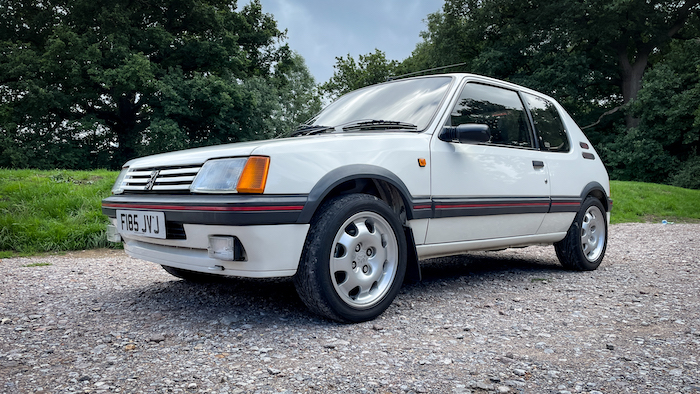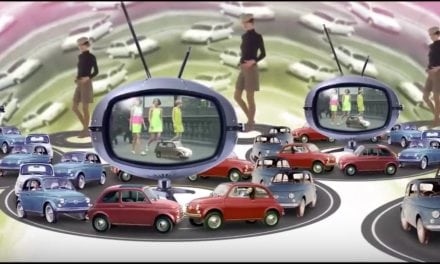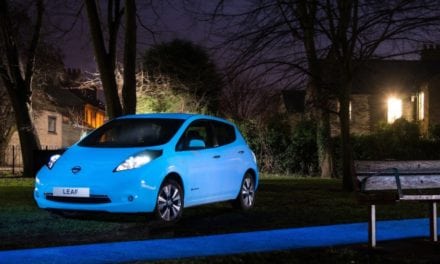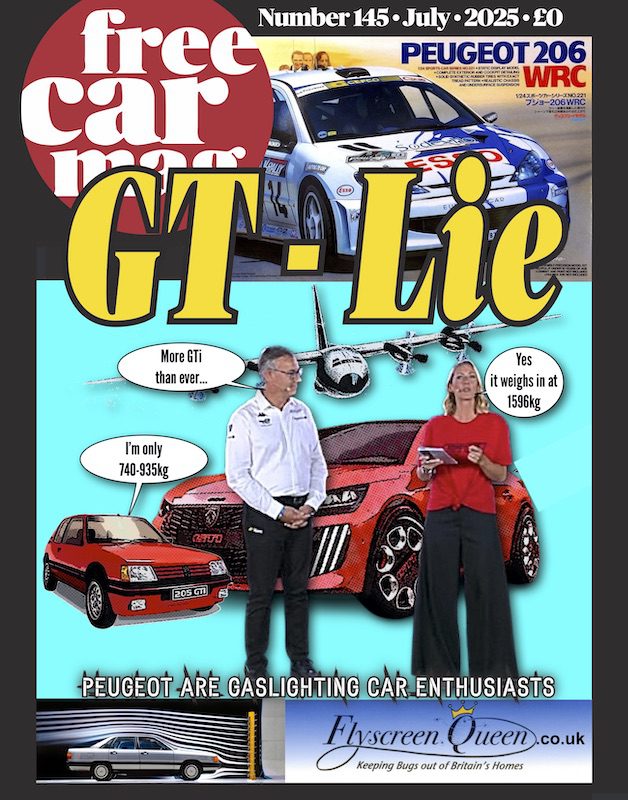80s Hot Hatch Legend Still A Riot!
Hot hatches ruled in the 1980s, and two particular GTIs sat at the top of the desirability ladder. The Volkswagen Golf GTI, arguably the progenitor of the hot hatch (precise, solid, efficient), and the upstart (feisty, fun and French) – the Peugeot 205 GTI.
Like Volkswagen’s GTI, the Peugeot also started from fundamentally sound basics – it was based on the hugely popular 205 hatchback, which itself ran for around 15 years from 1983. Throughout its life it remained essentially unchanged and almost unrivalled until the bigger 309 arrived in Peugeot’s range. Nonetheless, the 205 is credited as the car that gave Peugeot a new lease of life.
And while the Golf was all sharped-edged angular and boxy, this Peugeot was rounded, pert, cute, more organic. It boasted sophisticated independent suspension shared with Citroen (as both were within the PSA group) with an additional benefit; smaller packaging for improved interior space.
About a year into its life, 1984 saw the arrival of the GTI which would stay on sale for the next decade. Initially it arrived with a 1.6-litre engine which offered about 105bhp with another 10bhp added in 1987. But if you wanted more power, and a torquier more lustier engine, a year earlier it had been joined by the 1.9-litre GTI. This offered about 125bhp. By today’s standards, that doesn’t sound like much, but remember that this car was compact and light, weighing less than 900kg.
It was able to accelerate from rest to 62mph in 7.8 seconds and top speed was 128mph, while fuel economy remained reasonable at 36mpg. By comparison the 1.6 GTI accelerated in 9.5 seconds, reached 118mph and managed even better economy at 39mpg.
You could recognise the GTI easily enough through red pin-striping on the bolder bumpers and side cladding, the larger wheelarches with the plastic extensions, plus it sat a little lower with stiffer springs. The 1.9 had 15-inch Speedline alloy wheels, while the 1.6 had smaller 14-inch versions. Additionally, it also got all-round disc brakes whereas the smaller-engined GTI had front disc but rear drum brakes. Plus there were half-leather seats for the 1.9’s interior.
There was also a road-going version of the rally car, the T16, of which 200 were built for WRC homologation purposes. Those are rare and valuable. The 1.9 GTI represented accessible performance until that is, the rising insurance premiums made ownership almost prohibitively expensive. Even so, a new price of around £12,000 for a 1.9, seemed reasonable. And today? Good examples of the 1.9, like the car tested here, are worth about the same, if not a little more. Good money for an icon of the 80s, that is only going to appreciate further in value. But does it still put a smile on your face?
Before we fire it up, let’s just examine the practicality. For such a small car, open the rear hatch and reveal a surprisingly large boot, good enough to swallow a couple of suitcases, and 50:50 split-folding rear seats for more cargo space if you need it. You can accommodate two adults in the rear, and even ingress and egress is easy thanks to front seats that easily lift up and forward.
Talking of the front seats, beautifully sculptured tight bucket seats with particularly supportive side bolsters in the base are very comfortable. All the controls are straightforward and obvious, all-round visibility is outstanding thank to lots of glass and thin pillars, while the controls and gear lever are well positioned. The pedals are a masterclass of how to seduce even the most amateur of drivers into practicing the devilish driving art of heal-and-toeing (blipping the throttle while braking and changing down at the same time!) I’ve never encountered more perfectly placed pedals in any car ever.
And this sets the tone for the drive. The engine buzzes to life keenly and eagerly revs around to 5000rpm. It’s redlined at 6000rpm, but you don’t need to wind it around so much, because the sprinting all happens from pretty much straightaway. In fact, it’s hard to resist spinning the front wheels both in first – and second – gears.
The gearchange is light and a little imprecise and springy, but you never miss a ratio. Likewise, the clutch is short-travel and not particularly sharp in bite, but delightful to use. The brakes too are not sharp, but neither are they weak, proving not much less than a modern car, with logical linear application.
If there is a niggle, it’s the non-assisted steering on the model tested, although later cars did eventually get power steering. So, it’s a bit of a workout at low speeds, especially when parking, and the turning circle is not as tight as you’d expect. Having said that, on the move the steering is sharp, responsive and with great feedback, giving the driver a lot of confidence to push this car hard.
The positive steering combined with an excellent ride that isn’t too firm and certainly not harsh, means you can thrash along the worst country roads at speed without too much perturbance. Mix in brilliant handling which is poised, precise, but equally playful when you want it to be. Yes, it’s angle is responsive to the throttle, and you can provoke lift off oversteer, but the emphasis is on ‘provoke’. This is no snappy tail-happy treacherous tearaway. I drove it hard in the rain, and it was planted and confidence-inspiring.
It was also tight – that’s not just astonishing for a car that’s nearly 35 years old, but also for one that had a reputation, even when it was new, for fragility and less-that-substantial build quality. Apart from obvious squeaky seats, there are way fewer rattles than you’d be happy to ignore, though road and wind roar is far greater than you’d forgive in modern car.
Overall though, the Peugeot 205 GTI lives up to its reputation as a brilliantly feisty and fun all-rounder that is as practical as it is loopy. It’s hard not to grin and laugh-out-loud behind the wheel. What are you waiting for? Invest in one today while you still can.
BrownCarGuy.com
YouTube.com/BrownCarGuy
Facebook.com/BrownCarGuy
Instagram.com/ShahzadSheikh
Twitter.com/Shahzad_Sheikh











